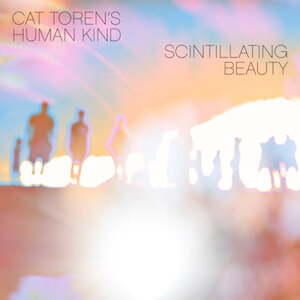Label: Edition Records, 2020
Personnel - Lionel Loueke: guitars, vocals.
The eclectic work of legendary pianist/keyboardist Herbie Hancock informs and inspires a new album from virtuoso West African guitarist Lionel Loueke, whose idiosyncratic style is not just served with a groove-oriented posture and rhythmically advanced patterns, but also emotional lyricism. He definitely puts his own stamp on fresh interpretations of selected Hancock pieces.
The magnetic jazz-funk of “Hang Up Your Hang Ups” gets a pristine acoustic treatment in Loueke’s hands, being consolidated through ornamental vocal expertise and occasional bright harmonics.
Simultaneously percussive and melodious, the vocals glide over the heady rhythm of “Driftin’”, whose complex aplomb made me think of those blues-based and Afro-bossa grooves of Brazilian Gilberto Gil. João Bosco is another Brazilian composer that came to my mind on the following track, “Tell Me a Bed Time Story”, while “Actual Proof” becomes purely percussive with the use of extended techniques for a peculiar sound.
Rendered with an effortless grooving motion, “Cantaloupe Island”, perhaps Hancock’s biggest hit, is impeccably molded to showcase the guitarist’s depth and virtuosity. Supplementing the relaxed acoustic drive, there’s an adequate wah-wah effect that gives the song an extra boost.
With imagination, Loueke permeates these songs far beneath the surface, and if he applies some wistful, balladic and classical tones to his interpretation of “Dolphin Dance”, then he dresses “Watermelon Man” with a completely renovated outfit. The lush restoration of the groove feels natural, low-key and hypnotic.
The guitarist gets to strut his stuff on “Rock It”, whose wild rhythm requires an impressive control of the bass notes in addition to a layer of dubbed guitar with delay.
Rounding out the album, there are two original compositions, “Voyage Maiden” and “Homage to HH”. Both are harmonically and melodically rich, with reflective thought and persuasive West African influence.
Boasting a firm grasp across styles and idioms, Loueke makes a wonderful homage to Hancock; from a great musician to another great musician. And he closes out the album with a rambunctious reading of “One Finger Snap”, whose original hard-swinging abandonment is discarded in favor of a relentless and hectic electronic vibe. A remarkable solo effort.
Grade A-
Favorite Tracks:
01 - Hang Up Your Hang Ups ► 02 - Driftin’ ► 11 - Rock It








































